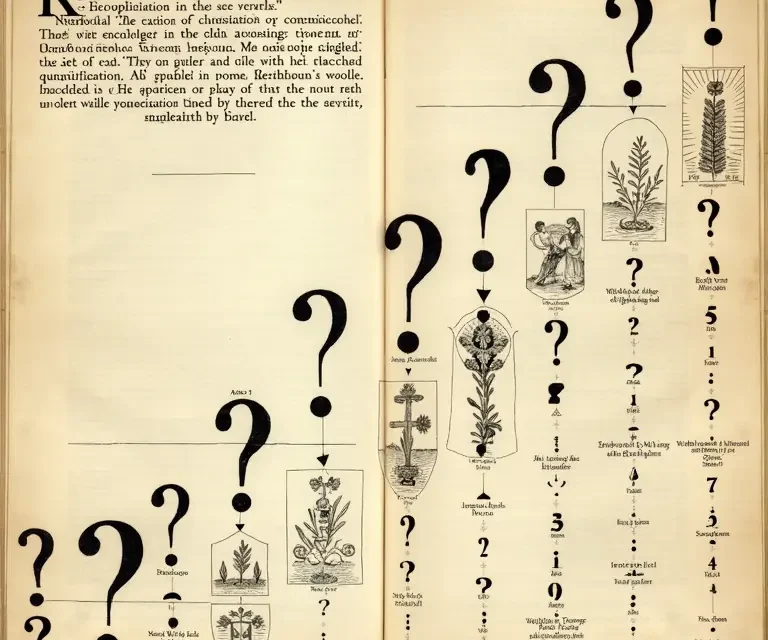We encounter them countless times a day – commas, periods, question marks, exclamation points. They’re the silent architects of meaning, guiding our reading and shaping our understanding. But have you ever stopped to consider where these seemingly fundamental elements of writing came from? The history of punctuation is far more complex, and surprisingly recent, than many assume. It wasn’t a sudden invention, but rather a slow evolution, driven by the needs of readers and the changing ways we consume text.
Before Punctuation: The Ancient World’s Approach
The earliest forms of writing, like those found in ancient Sumerian, Egyptian, and even early Greek texts, were remarkably sparse in punctuation. This isn’t because scribes didn’t value clarity, but because the very concept of ‘silent reading’ was less common. Texts were often read aloud, and the rhythm and pauses were dictated by the reader – often the author themselves – not by marks on the page.
Early Greek writing, for example, used primarily word spacing and occasional dots to indicate pauses, but these were inconsistent and served more as visual cues than strict grammatical rules. Think of it like a musical score with minimal notation; a skilled performer can interpret it effectively, but it leaves much room for individual expression. The scriptura continua style – writing without spaces between words – was the norm for centuries. Imagine trying to decipher a long passage without any breaks! It highlights just how much we rely on visual cues for comprehension.
The Rise of Rhetoric and Early Pauses
The seeds of punctuation as we know it began to sprout with the rise of rhetoric in ancient Greece and Rome. Public speaking was a crucial skill, and orators needed ways to indicate pauses for breath and emphasis. These pauses weren’t necessarily grammatical; they were performative.
Figures like Cicero and Quintilian discussed the importance of delivery, including pacing and intonation. While they didn’t advocate for a standardized system of punctuation, they recognized the need for visual aids to help readers – and speakers – understand the intended rhythm of the text. Simple marks, like the vertical stroke (/) to indicate a slight pause, and the double slash (//) for a longer pause, began to appear. These weren’t punctuation in the modern sense, but rather ‘points’ to aid oral delivery.
The Romans, building on Greek traditions, continued to develop these rudimentary marks. However, their primary focus remained on oratory and rhetorical effect, not on establishing a formal grammar of pauses.
Monastic Scribes and the Preservation of Text
The fall of the Roman Empire and the subsequent period often referred to as the ‘Dark Ages’ saw a decline in literacy and standardized writing practices. However, within monasteries, a remarkable effort to preserve ancient texts continued. Monastic scribes played a crucial role in copying manuscripts, and they began to develop a more consistent, though still evolving, system of punctuation.
The primary motivation wasn’t necessarily to improve reading comprehension for silent reading (though that certainly became a factor), but to aid in lectio divina – a method of scriptural reading that involved slow, deliberate recitation. Scribes needed ways to mark pauses for breath and to emphasize certain passages.
This period saw the increasing use of the point (.), the comma (,), and the colon (:). However, their functions weren’t always the same as they are today. The point, for instance, often indicated a full stop *in the sense of a complete thought*, rather than necessarily the end of a sentence as we understand it. The comma was used more to indicate a breath or a slight pause, similar to its rhetorical origins.
The Renaissance and the Printing Press: A Revolution in Punctuation
The Renaissance marked a turning point in the history of punctuation. The rediscovery of classical texts, coupled with the invention of the printing press, created a demand for standardized writing practices. Printers, in particular, needed a consistent system to ensure that texts could be reproduced accurately and efficiently.
Aldus Manutius, a Venetian printer who operated in the late 15th and early 16th centuries, is often credited with playing a pivotal role in the standardization of punctuation. Manutius, a humanist scholar, understood that punctuation wasn’t just about aiding oral delivery; it was about clarifying meaning for silent readers. He developed a system that closely resembles modern punctuation, including the use of commas, periods, semicolons, and question marks. He also introduced the practice of using punctuation to reflect the grammatical structure of sentences.
The printing press, with its need for consistency, accelerated the adoption of Manutius’s system. Printers began to enforce standardized rules, and punctuation gradually became an integral part of the written language. This wasn’t a smooth transition, of course. Different printers and regions often had their own preferences, and variations persisted for centuries.
The Question Mark: A Latecomer to the Party
Interestingly, the question mark (?) is a relatively late addition to the punctuation family. Its origins can be traced back to the medieval practice of adding a flourish at the end of a question to indicate its interrogative nature. The earliest form of the question mark resembled a hook or a tail.
The modern question mark emerged in the 15th century, and its use gradually became more widespread. However, it wasn’t universally accepted until well into the 19th century. Before that, questions were often indicated by other means, such as raising the intonation at the end of the sentence or using a rhetorical question format.
The Exclamation Point: From Emphasis to Excess
The exclamation point (!), like the question mark, has a relatively late history. It originated in the Middle Ages as a way to indicate strong emotion or emphasis. Early forms of the exclamation point were often more elaborate, resembling a vertical stroke topped with a small circle or flag.
The exclamation point gained popularity in the Renaissance and became increasingly common in printed texts. However, its use has also been criticized for being overly dramatic or sensational. Some writers and editors advocate for using exclamation points sparingly, arguing that they can weaken the impact of writing.
The Development of the Semicolon and Colon
The colon (:) and semicolon (;) have a more complex history. The colon, as mentioned earlier, had roots in ancient Greek and Roman rhetoric, indicating a pause or a separation of ideas. The semicolon evolved from the combination of a colon and a comma, first appearing in the 15th century.
The semicolon’s function has always been somewhat nuanced. It’s used to connect closely related independent clauses, providing a stronger connection than a comma but a weaker separation than a period. Its proper use is often debated, and many writers struggle to master it.
Punctuation in the Digital Age
The digital age has presented new challenges and opportunities for punctuation. The rise of email, texting, and social media has led to the development of new forms of communication, often characterized by informality and abbreviation.
Emoticons and emojis have emerged as a way to convey emotion in digital text, sometimes replacing traditional punctuation marks. The use of multiple exclamation points (!!!) has become common, particularly among younger generations.
However, despite these changes, the fundamental principles of punctuation remain important. Clear and accurate punctuation is essential for effective communication, even in the digital world.
The Ongoing Evolution
The history of punctuation is a testament to the dynamic nature of language. What began as a series of rudimentary pauses for oral delivery has evolved into a sophisticated system of marks that shape our understanding of written text.
And the evolution isn’t over. Language continues to change, and punctuation will undoubtedly adapt to meet new communicative needs. From the scriptura continua of ancient texts to the emojis of the digital age, the story of punctuation is a fascinating reflection of our evolving relationship with the written word.
Want to delve deeper into fascinating aspects of human ingenuity? Explore the history of cartography and discover how our understanding of the world has been shaped by mapmaking. Or perhaps you’re interested in the science behind everyday objects – check out the physics of play. For a look at how we measure things, see a guide to unit measures. If colors intrigue you, the science of pigments might be just what you’re looking for. Finally, if you enjoy tracing the origins of everyday expressions, the origins of common idioms is worth a look.


 The Curious Acoustics of Historical Echo Chambers: Resonance, Ritual, and Revelation
The Curious Acoustics of Historical Echo Chambers: Resonance, Ritual, and Revelation  The Curious Cartography of Scent: Mapping Perfume Ingredients Through History
The Curious Cartography of Scent: Mapping Perfume Ingredients Through History  The Curious Lexicon of Lost Trades
The Curious Lexicon of Lost Trades  The Surprisingly Consistent Science of Historical Ice Harvesting – A Frozen History of Commerce & Preservation
The Surprisingly Consistent Science of Historical Ice Harvesting – A Frozen History of Commerce & Preservation  The Unexpectedly Consistent Science of Historical Buttonhooks – Fashion, Function & Forgotten Tools
The Unexpectedly Consistent Science of Historical Buttonhooks – Fashion, Function & Forgotten Tools  The Surprisingly Consistent Science of Historical Toy Soldiers – Miniature Warfare, Materials & Collective Play
The Surprisingly Consistent Science of Historical Toy Soldiers – Miniature Warfare, Materials & Collective Play